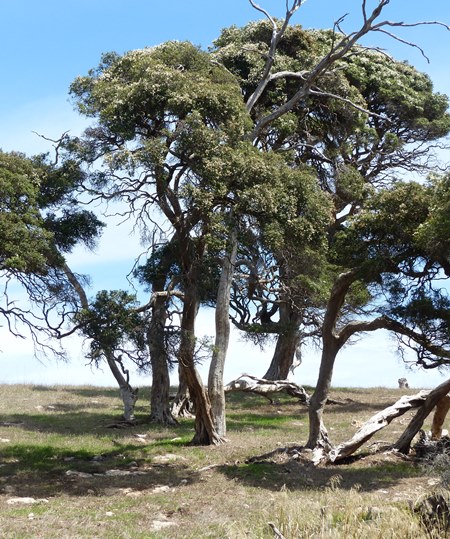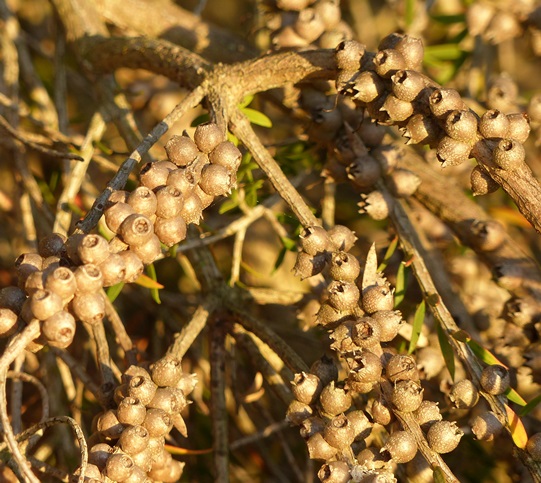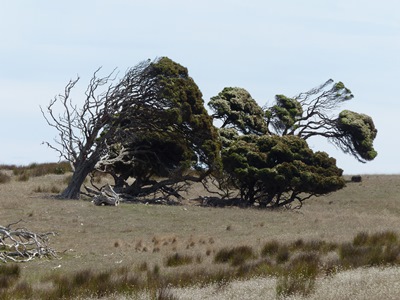Species of the Month: Moonah – in full bloom
Dryland Tea-tree (or Moonah) is in full bloom at the moment throughout the region.
The botanical name for Moonah is Melaleuca lanceolata. Melaleucas are trees and shrubs in the Myrtacaea family commonly known as paper-barks, honey-myrtle or tea-tree. All Melaleucas in our part of the world (except Moonah) grow in low lying areas. Where Moonah grows as the dominant vegetation community it is considered endangered in the South East. Normally it grows on shallow soils especially rocky ridges with a native grassy and low shrub understorey. It occurs throughout the entire South East region however was once more common along the coast. Moonah are slow growing. They can reach up to 15m, be as small as 1m but normally they are 4-10m in height, depending on the proximity to the coast and soil conditions.
The ‘bottlebrush’ like flowers (or inflorescence) are cream to white and are at their prime at the moment providing a massive flush of nectar for insects, birds and small mammals
The seeds of Moonah are held in woody capsules in rows or clustered along the branches. If the tree becomes stressed, dies, or if a branch breaks the capsules open releasing the tiny seeds to the wind.
Only small remnants and patches of scattered trees remain these days across much of the species’ range, and being hardy souls many can seen battling the elements on wind-exposed ridges near the coast. How old are some of these old gnarled and twisted trees? – if someone out there has an opinion or answer, please let us know!
In present day, management intervention is critical as most patches are being over-run with weedy shrub species, including natives which are closing up what were once open, grassy and herb rich woodlands. A regional action plan has been prepared for this vegetation community offering management advice and helping to set priorities for future fencing, weed control and revegetation opportunities.
If you would like to improve the quality of your patch of ‘Moonah’ get in touch with either Natural Resources South East (08) 8735 1177 or us at NGT, so we can arrange a site visit to provide free advice on (08) 8797 8596.
This project is supported by Natural Resources South East and the Australian Government.





